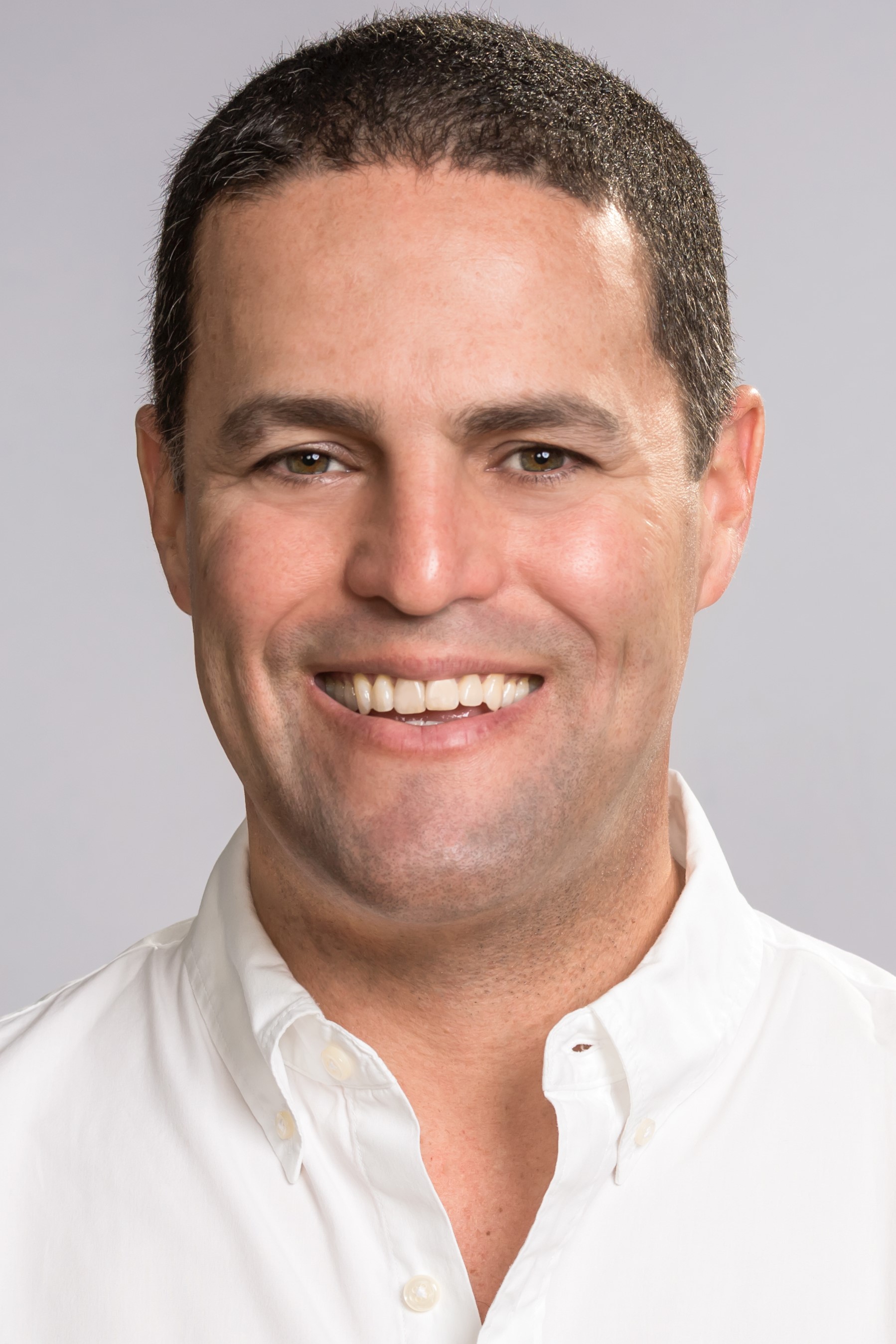
After a difficult year for traditional advertising, top ad-tech executives see some changes coming in 2024.
Growing in importance are connected TV as a channel for advertisers, the need for accountable data and a continuing shift to automation.
Here are some predictions as 2024 gets underway.
“In 2024, we’ll see a renewed focus on premium video — what it is and what factors buyers and sellers should consider when engaging in video transactions,” said Mark McKee, general manager of FreeWheel, Comcast’s ad tech company. “This issue is timely as premium video continues to grow and as content proliferates across platforms and screens. In today’s complex and fast-moving media landscape, buyers want (and deserve to know) that the ad inventory they’re purchasing is high-quality and brand-safe. Holding premium video to a higher standard is a win-win for the industry, as such efforts will help drive a more enhanced viewer experience.”

At the same time, for buyers, linear and digital video are converging.
“Innovation-wise, one of 2023’s top moments was the launch of AMC Networks’ programmatic addressable capability,” said Larry Allen, VP and GM, data and addressable enablement at Comcast Advertising. “With this breakthrough, we can expect to see a major increase in addressable ad inventory being made available programmatically in 2024. This, tied with a stronger push and emphasis on authenticated identity, will help pave the way for even more accurate audience targeting and measurement innovation across the TV ad ecosystem,“
Kevin Krim, CEO of EDO, said that the quality of TV content will be more important than how it’s watched.
Fifteen years ago, ‘What is TV?’ was a straightforward question with a straightforward answer: If a piece of content appeared on your TV screen, it was ‘TV’ — whether it was a TV program or a TV ad, and no matter how you saw it. Simple. But over the past decade and a half, this answer has become far more complex, and the lines between ‘TV’ and ‘digital video’ far more blurred,” Krim said.
“2023 saw a major shift in how EDO’s clients planned and budgeted for ‘TV,’ more often than not including YouTube in their TV budgets after years of including it in social video budgets,” he said.
“In 2024, this trend will only accelerate, as advertisers, networks, agencies and streaming platforms come to define ‘TV’ as ‘high-quality video content’ — regardless of where, when, and how we access it,” said Krim.
As TV shifts towards digital, programmatic TV advertising has taken a leap forward. That will press buyers and advertisers to finally start asking hard questions about the data they are using, Krim said.

“Programmatic will continue its convergent TV invasion in 2024, as advertisers chase the allure of combining the highly engaging, premium environment of TV with the precise targeting they use to buy programmatic banner ads,” he said.
“This programmatic trend will force all of us to finally confront a gaping hole in the fundamentals of the audience-targeting ecosystem: the accuracy of the data. According to a recent study from Truthset, nearly half the data used in digital audience targeting is flat-out wrong. And plenty of so-called ‘premium’ programmatic TV ad buys wind up being trafficked on low-quality websites instead of the prestige TV app experience buyers expected. As media costs increase in an election + Olympics year, these quality issues will get a bright, hot spotlight on them,” said Krim.
The upshot? 2024 will be the year that advertisers really start investigating the data they invested in to make their programmatic TV buying strategies sing, according to Krim.
“This, in turn, will drive the DSPs [demand side platforms] and SSPs [sell side platforms] to confront another notable gap — most platforms only optimize for audience targets and cost minimization, while leaders like Google are optimizing for outcomes,“ Krim said. “Modern marketers will win by taking a more holistic view of performance, rather than simply assessing their ability to ‘reach’ smaller and smaller audiences of dubious quality.”
In the same vein, Matt McLeggon, senior VP, advanced solutions at Magnite, said that although programmatic has started to show potential in representing what a model for a fully converged television ecosystem could look like, “unfortunately, a scarcity of audience and contextual signals in legacy environments has proven to be a significant headwind to efficient monetization.”
McLeggon said “supply-side audience activation, already a growing trend in programmatic, offers us a near-term solution. In 2024, media owners and MVPDs [multichannel video programming distributors] will drive programmatic addressable forward by leaning into the practice of activating against rich subscriber and consumer data within their own supply platforms. This approach gives programmatic buyers the targeting refinement they are accustomed to in CTV while avoiding the technical and commercial headaches that would come with passing the usual identifiers into the bid stream that goes out to DSPs.”
Mike Seiman, CEO and founder of Digital Remedy, said digital would take center stage in TV advertising with linear TV becoming a role player.
“While advertisers will continue to invest in linear TV, the expectations of the medium and what its role and purpose are in the broader ad ecosystem will largely evolve,“ Seiman said. “That’s because increasingly, digital TV is no longer ancillary for brands or consumers. The medium inherently provides advertisers better ways to hold spend accountable to ROI in ways that linear simply can’t, which will impact spending allocations in a much bigger way in 2024.”
At the same time, streaming TV will come under more careful scrutiny, according to Seiman.
“As streaming competition rises, and CTV budgets surge, the quality of streaming ad inventory will come under the microscope,” he said.
“Clearly, not all CTV inventory is equal when it comes to content quality, audience, engagement and attention,“ Seiman said. ”Thus, brands are going to start to insist on more transparency in inventory and a push toward pricing that is reflective of quality. As a result, long-tail inventory and online video, while still playing an important role for brands, will be viewed as ‘less premium’ compared to top-flight CTV.”
Dan Slivjanovski, chief marketing officer of DoubleVerify, said that better measurement is coming to tame the Wild West of connected TV.
“Since its inception, CTV advertising has faced limitations due to the unique nature of the environment,“ he said. “According to DV data, for example, one-third of CTV impressions serve in environments that play ads and fire impressions long after the TV is turned off, making viewability an important CTV metric.”
Slivjanovski said the open measurement system will be more widely adopted in 2024, ameliorating the problem.
“Open measurement unlocks full cross-screen viewability measurement using the same underlying expectations and specifications across CTV, mobile and desktop environments; tells exactly how many ads serve partially off-screen or to TVs that are turned off; and provides audio and AVOC measurement, the ability to transact on viewable impressions in CTV, which is already a common billable metric on desktop and mobile and measurement and reporting based on customized viewability standards,” Slivjanovski said.
At the same time, attention metrics are going to become more important in CTV.
“To prove that an ad campaign produced a return on investment, advertisers need to measure its performance on every platform,” Slivjanovski said. “But this has been challenging on CTV due to the lack of available KPIs [key performance indicators] to measure performance and optimize outcomes. As a proxy, most CTV advertisers currently optimize campaigns based on cost. However, this presents a challenge when most advertisers are already purchasing inventory at the lowest prices when buying directly from publishers or private marketplaces (PMPs). For this reason, advertisers have been especially overdue for a solution to better gauge impact on this channel.”
DV research shows that only 30% of CTV ads garner two or more seconds of eyes-on-screen viewing.
“With the increased demand and general advancement of CTV viewability measurement technology, the development of granular attention measurement for CTV continues to be an industry priority,” Slivjanovski said. “DV predicts CTV attention measurement will become more widely available and see increased adoption in 2024.”
Dan Mouradian, VP, global client solutions at Innovid, is less sold on attention.
“While conversations around attention metrics continue, whether or not a consumer has ‘paid attention’ to an ad does not define campaign effectiveness — and in an environment that has seen significant investment, such metrics shouldn’t be the main focus when measuring performance in CTV. In the new year, we can expect to see advertisers not only come to the realization that there are other ways to measure campaigns, but that there are better methods like interactive ads that actually give insight to outcomes without question,” Mouradian said.
His Innovid colleague, Laura Foster, VP, product marketing, sees ad servers evolving.
“The modern ad server is like an iPhone — users depend on their smartphone in the same way that advertisers depend on their data-driven ad servers,“ she said. “But in order for an ad server to survive in today’s competitive market, it must remain independent — making the best decisions on behalf of the customer while ensuring transparency and trust as a neutral third party.
“We’ve already seen the importance of independence, with Amazon planning to shutter its ad server at the end of next year. In 2024, ad servers will be seen as more than counting clicks and impressions: they are a critical pathway to transforming everyday advertising into direct value.”
Tony Marlow, chief marketing officer at LG Ads Solutions, sees advertisers cutting the cord and moving dollars to CTV.
“In 2024, we anticipate a significant and continued shift of advertising dollars from linear TV to connected TV,” he said. “This change is part of the ‘big shift’ observed over the past few years, driven by consumers spending more time viewing CTV content “Notably, the rise in popularity of free, ad-supported streaming services offers advertisers a prime opportunity to engage with consumers in their increasingly preferred medium. Moreover, the introduction of ad-supported streaming options on major platforms like Netflix and Disney Plus expanded the available inventory. This transition is expected to accelerate in 2024.”

Marlow added that CTV will become a groundbreaking battleground for political advertising in 2024.
“With CTV's ability to target specific demographics, locations, and interests, political campaigns will leverage CTV’s addressability to tailor their messages more precisely than ever before,” Marlow said. “This strategic move not only reflects the changing landscape of media consumption but also acknowledges that younger, tech-savvy voters are more likely to be influenced through digital streaming services. Consequently, CTV advertising will play a pivotal role in shaping political narratives, offering an unprecedented level of engagement and message customization in the realm of electoral politics.”
Michael Scott, VP of sales and ad operations at Samsung Ads, sees FAST channels giving AVOD a run for its money in 2024.
“Many free ad-supported TV (FAST) platforms were originally launched to give viewers more choice in an increasingly expensive subscription-driven streaming ecosystem,” Scott said. “Now, in 2024, we can see that the choice is a clear preference as legacy subscription players rethink their strategy around premium offerings.”
Every major news network now offers FAST content and live sports is moving toward FAST.
“These platforms are now becoming serious contenders for content exclusives and debuts, further challenging AVOD’s dominance,” Scott said.
Scott added that Samsung Ads expects shoppable ads to get more attention. A recent Samsung study found that shoppable ads have great brand recall and that 50% of viewers who recalled seeing one interacted with a shoppable ad,
“When consumers see a product on TV, they want to be able to quickly learn more or purchase that product and increase the ease of access along their path to purchase,” Scott said.
Hunter Terry, head of CTV at Lotame, expects FAST channels to get stronger, helping independent streamers.
“As more giant players like Netflix and Disney gain traction with their ad-supported offerings, smaller video programmers — such as Tastemade — will look for ways to gain more share through partnerships and scale. In fact, CTV is starting to gravitate towards a concentrated group of winners who command the majority of spending. Given those circumstances, we may see many independent content players abandon standalone CTV apps, and consider handing sales over to platforms like Roku or Amazon or various FAST networks,” Terry said.
“Because of that, more ad dollars are likely to be funneled toward the platforms, rather than the independent publishers,“ Terry said. ”As in the gold rush, there may be more money to make selling tools than mining for actual gold.”
Yahoo chief revenue officer Elizabeth Herbst-Brady predicted that creative would surge in its importance to advertising performance.
”In 2024, creative will play a bigger role in programmatic success,” Herbst-Brady said. “This is especially true as the industry grapples with challenges in identity resolution. While we must continue to solidify foundations around identity and quality inventory, creative will drive performance, engagement and brand awareness.
“Creative will be top of mind for all advertisers, but particularly so for CTV advertisers with the convergence of generative AI, the necessity of managing the cost of creative development and addressability of CTV,” she said.
“Advertisers will be emboldened by AI to develop an array of creative variations for their campaigns and to deliver personalization like never before,” Herbst-Brady continued. “This allows them to engage audiences across geographical areas, languages and viewing environments — without incurring sky-high production costs. But it also reduces ad fatigue, by varying the creative viewers see in their own specific households.”
Similarly, Iris TV CEO and co-founder Field Garthwaite said he believes the right mindset plus the right creative equals better campaign performance.
”Video-level data enables brands to better identify consumers, ensure they’re reaching the right audiences and better place ads within the context of the content they’re engaging with,“ Garthwaite said. ”Research shows that consumers pay 4 times more attention to ads that are relevant to the content they are watching.
“AI and machine learning offer promising avenues for ad creative development and targeted messaging,” he added. “However, the challenge lies in ensuring ads align with audience mindsets. As the advertising landscape evolves, reaching consumers in the right mindset becomes as critical as crafting quality creative. Misalignments can result in negative brand perceptions, impacting political campaigns as well.
“In fact, according to the AVCA [Alliance for Video-Level Contextual Advertising], more than half of consumers were less interested in the brand and products found in contextually misaligned ads,“ Garthwaite said. “For brands that are looking to better increase campaign performance in 2024, it's crucial to not only leverage video-level data but emotional and AI-driven data to deliver the right ad, in the right context and right mindset of the consumer."







